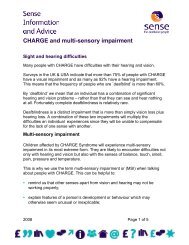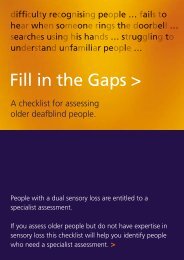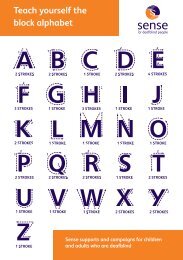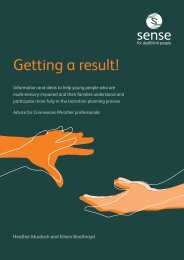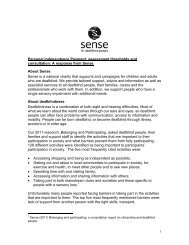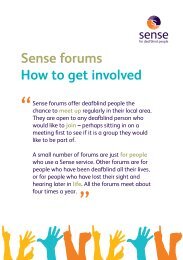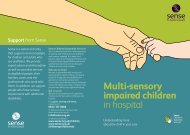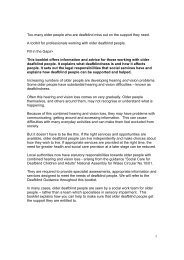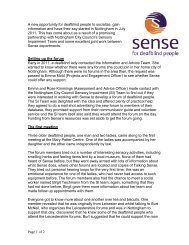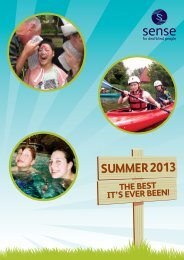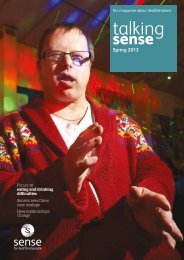MSI Unit Curriculum - Sense
MSI Unit Curriculum - Sense
MSI Unit Curriculum - Sense
Create successful ePaper yourself
Turn your PDF publications into a flip-book with our unique Google optimized e-Paper software.
Victoria School: <strong>MSI</strong> <strong>Unit</strong> <strong>Curriculum</strong>146non-verbal communication see non-symbolic communication above.non-verbal prompts prompts which do not use language or symbols(eg: pointing; touching a pupil’s hand with the next object needed).object of reference (OR) an object standing for an activity, person, place orthing. Initially an object used in the activity would form the OR for the activity;later, other objects are used specifically for the purpose of communication.Later still, partial or miniaturised objects may be used.orientation knowing where you are and how to get to where you want to go.parallel play pupils play alongside each other or by an adult, aware of theother’s activity but not playing together.passive touch sensations received on the skin, for example from the draughtfrom an open door (also called cutaneous touch).personal identifier a means of identifying a specific person – often an objectworn by the person, such as a bracelet; sometimes a personal attribute suchas a man’s beard. An identifier must be unique, unchanging and constantlyavailable to the pupil.physical environment the places and objects surrounding a pupil.physical prompt a prompt which involves touching the pupil.pre-intentional actions actions which are not undertaken to fulfil a specificpurpose, carried out by someone who does not yet understand the concept ofpurpose.pre-intentional communication actions which others can interpret as holding acommunicative message but which do not carry that intention. For example, apupil may breathe more rapidly and begin to cry, and an adult may interpretthis in context as ‘I’m hungry’.prompt a brief intervention from a staff member to help a pupil begin anactivity or move on to its next stage.prompt-dependency reliance on prompts to complete a task, usually becauseof difficulty remembering the stages in order and/or because of a lack ofconfidence or a wish to confirm that another person is present.range of interest range within which a pupil monitors the environment throughsight, hearing, smell and/or passive touch. It usually indicates the range withinwhich pupils feel able to anticipate and respond to changes, rather than thelimits of their sensory function.reactive environment an environment which is responsive to the pupil, feedingback the effects of the pupil’s and others’ actions.




